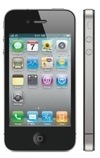The worldwide mobile phone market grew 19.8% year over year in the first quarter of 2011 (1Q11) fueled by high smartphone growth, especially in emerging markets, and gains made by market challengers. According to the International Data Corporation (IDC) “Worldwide Mobile Phone Tracker” vendors shipped 371.8 million units in 1Q11 compared to 310.5 million units in the first quarter of 2010.
Apple maintained its number four spot on IDC’s Top 5 list thanks to a record quarter for unit shipments. The company posted the highest growth rate of the worldwide leaders. Apple’s results were buoyed by strong sales on Verizon Wireless and additional carrier deals; the company is now on 186 carriers operating in 90 countries. The iPhone once again sold particularly well in developed economic regions of the world, such as North America and Western Europe.
According to IDC Apple has 5% market share of the global mobile phone market compared to 2.8% in the year-ago quarter. Ahead of Apple on the list are Nokia (29.2% market share), Samsung (18.8%) and LG Electronics (6.6%).
Smartphone growth worldwide, particularly in Asia/Pacific (excluding Japan), Middle East and Africa (MEA), and Latin America, helped lift the overall market to a new first-quarter high, according to IDC (http://www.idc.om). Increasingly, mobile phone makers and carriers are making smartphones affordable to a wider variety of people, which has helped drive the market to new heights, notes the research group.
“Several notable vendors, including feature phone makers, outpaced the overall market, which contributed to share losses of some top suppliers,” says Kevin Restivo, senior research analyst with IDC’s Worldwide Mobile Phone Tracker. “The growth of companies outside the top five vendors — vendors in the ‘Others’ category, such as Micromax, TCL-Alcatel, Huawei, and Research In Motion — shows that the overall market is still very much ripe for share gains.”
“At the same time, feature phones have represented the majority of mobile phone shipments, but still are under tremendous pressure from smartphones,” adds Ramon Llamas, senior research analyst with IDC’s Mobile Phone Technology and Trends team. “Even popular quick-messaging devices (phones with a QWERTY keyboard), once a bright spot within the feature phone market, appear to be losing steam as smartphones gain popularity. Still, IDC does not expect feature phones to disappear quickly as there is still strong demand across the globe.”
Nonetheless, IDC expects almost all of the worldwide mobile phone market’s growth to be driven by smartphones throughout the forecast, which goes to 2015.
“Increasingly smartphones will drive market growth. This means feature phone makers will either need to become smartphone dependent or consolidate that part of the market,” notesRestivo.
In the United States last quarter, Apple’s iPhone and the LTE-enabled HTC Thunderbolt were two smartphones introduced at Verizon Wireless that helped keep the category front and center of the overall mobile phone market. Feature phones, including once popular quick messaging devices, continued to lose ground. Similarly, in Canada, the market grew thanks to smartphones. BlackBerry, iPhone, and Android devices were best sellers.
The Asia/Pacific market grew thanks in part to strong mobile phone shipments to Greater China despite the seasonally slow quarter. Smartphone shipment growth was exceptional despite some key product launch delays. In Japan, the market underperformed IDC’s forecast due to the impact of the earthquake and tsunami. Japan’s largest mobile operators ordered fewer phones than expected in March.
In Western Europe, Android-based phones and iPhones helped grow the market in the seasonally slow quarter. New devices from HTC, Samsung, and Sony Ericsson sold well in most countries in the high-end tiers. Alcatel, Huawei, and ZTE Android devices helped drive mid-tier segment sales volume. Meanwhile, feature phone shipments receded as more smartphones hit the market.
The MEA markets performed well on a year-over-year basis despite civil unrest in some Gulf countries, such as Egypt, where sales were negatively impacted by the turbulence. Nokia and Research In Motion performed well in the regions overall.
The Latin America market growth continued last quarter as the gap between smartphones and feature phones narrowed. Smartphone shipments were aided by carriers, who are moving customers to 3G networks while vendors shipped more touchscreen and QWERTY models. New Android and Windows Phone devices were launched too, which helped drive smartphone growth. The average selling prices also declined in the region, thanks to aggressive expansion by Chinese vendors.




